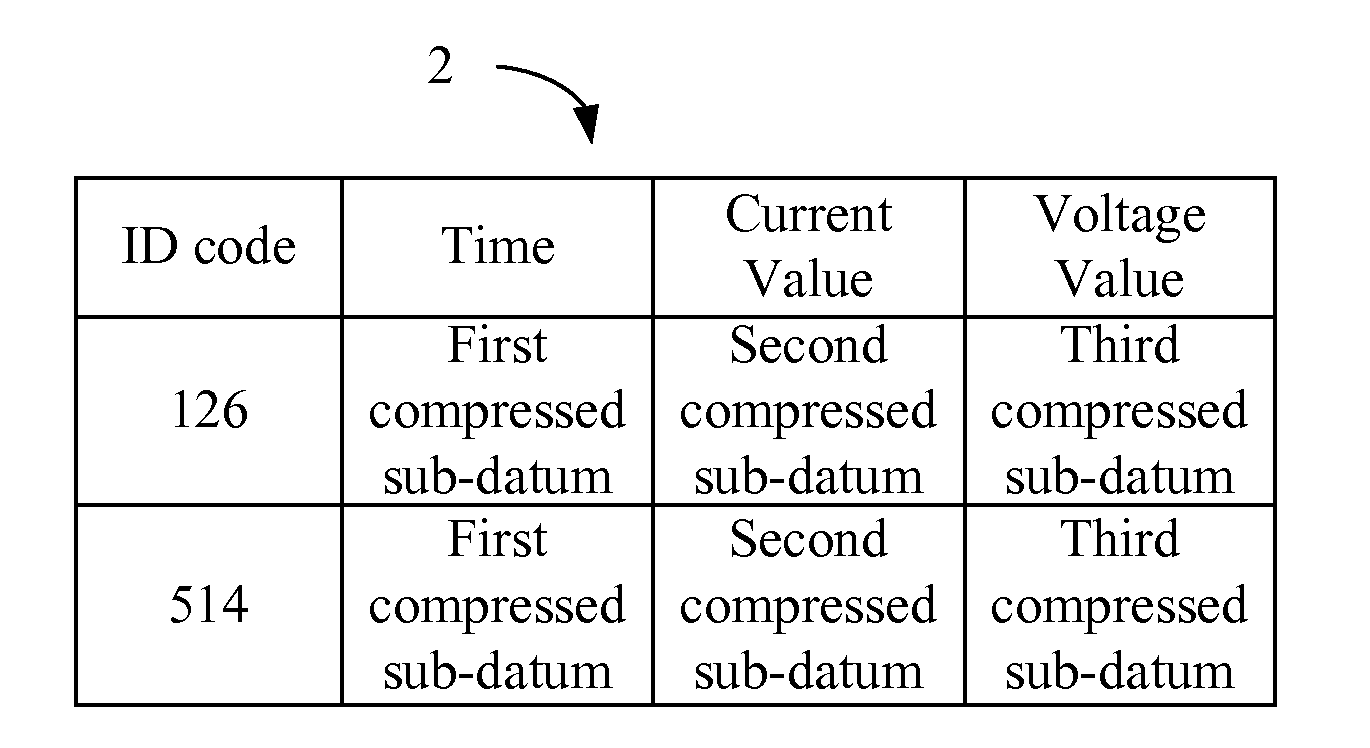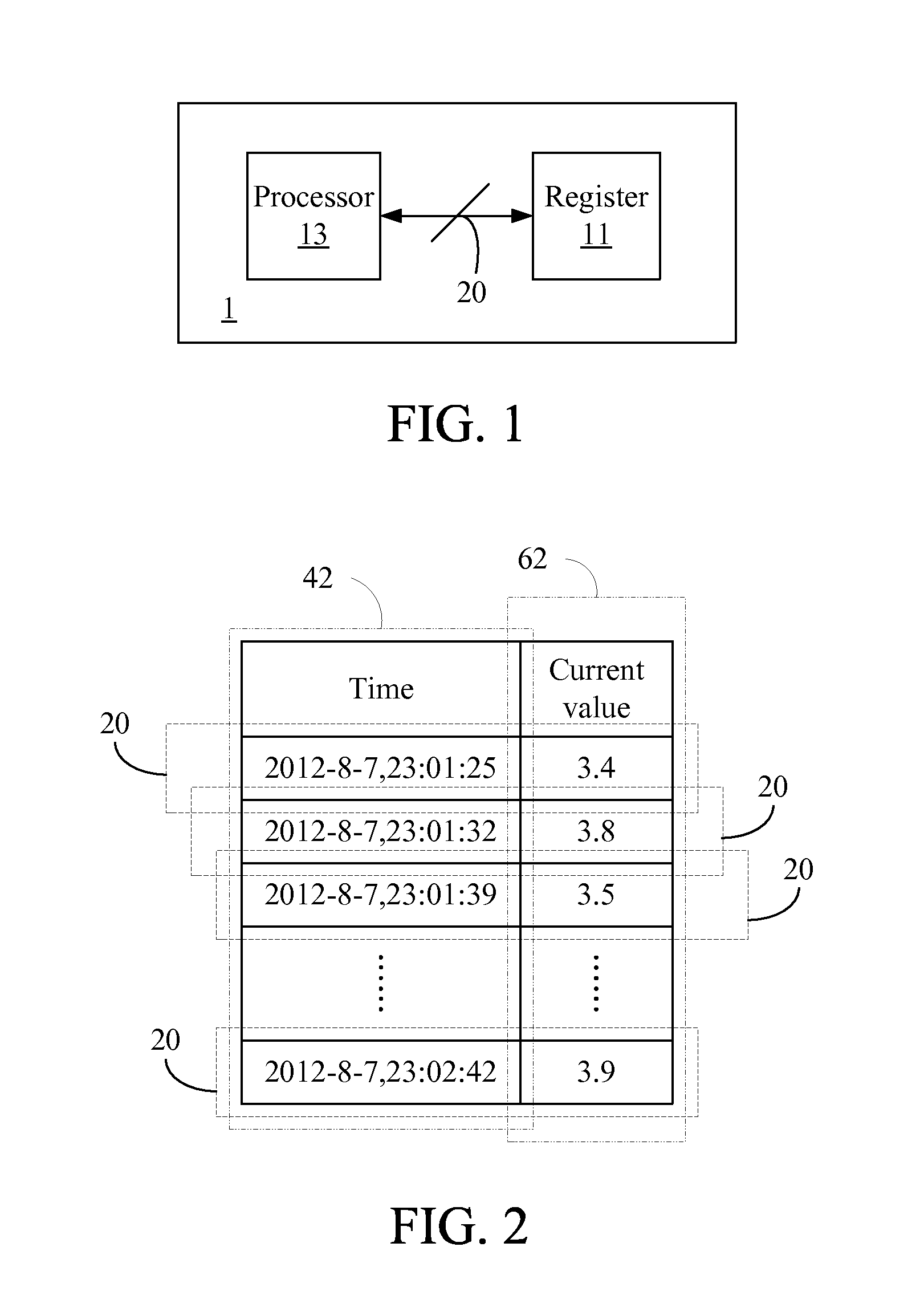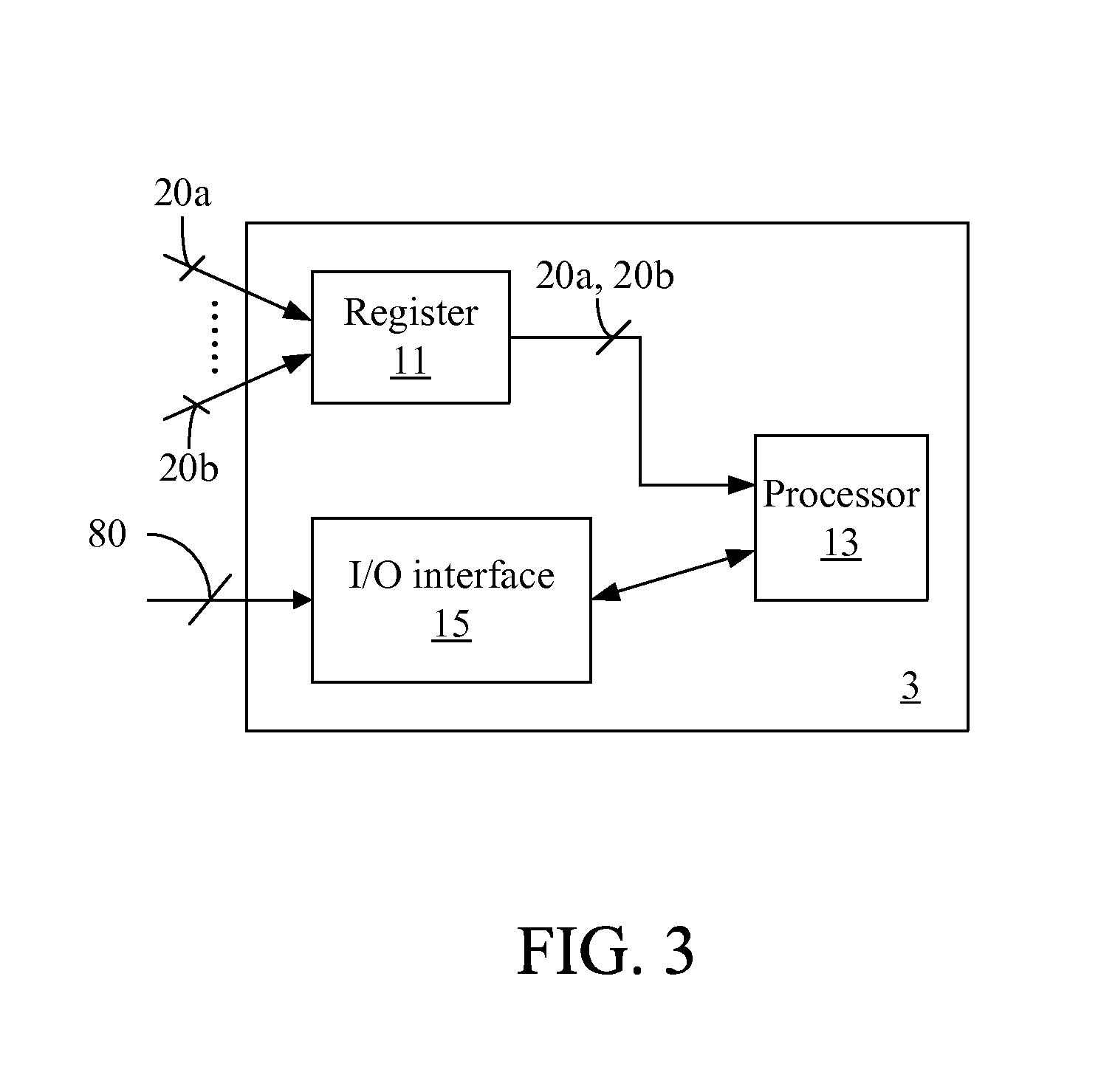Data processing apparatus and method
a data processing apparatus and data processing technology, applied in the direction of electrical apparatus, code conversion, etc., can solve the problems of not specifically using compression technology built in databases, reducing the memory space occupied in hard disks, and difficult backup management, so as to shorten the time necessary for querying data, improve data compression rate, and improve data compression rate
- Summary
- Abstract
- Description
- Claims
- Application Information
AI Technical Summary
Benefits of technology
Problems solved by technology
Method used
Image
Examples
second embodiment
[0026]Refer to FIG. 3, FIG. 4A and FIG. 4B for the present invention. FIG. 3 depicts a data processing apparatus 3 of this embodiment. The data processing apparatus 3 comprises a register 11, a processor 13, and an input / output (I / O) interface 15. The processor 13 is electrically connected to the register 11 and the I / O interface 15.
[0027]The register 11 stores a plurality of data 20a from a first apparatus and a plurality of data 20b from a second apparatus. The first apparatus has an identification code of 126, while the second apparatus has an identification code of 514. FIG. 4A depicts a schematic view of the data 20a, 20b. Each of the data 20a, 20b comprises an identification code, a first sub-datum, a second sub-datum, and a third sub-datum. The plurality of first sub-data corresponds to a first column 42, the plurality of second sub-data corresponds to a second column 62, and the plurality of third sub-data corresponds to a third column 72. In the second embodiment, the names...
first embodiment
[0028]Similar to the first embodiment, the processor 13 determines that the plurality of first sub-data has a first characteristic and determines a first compression algorithm according to the determination result. The processor 13 determines that the plurality of second sub-data has a second characteristic and determines a second compression algorithm according to the determination result. The processor 13 determines that the plurality of third sub-data has a third characteristic and determines a third compression algorithm according to the determination result.
[0029]In this embodiment, during subsequent compression of the sub-data, the processor 13 compresses those of the plurality of first sub-data that have a same identification code into a first compressed sub-datum respectively by the first compression algorithm. Likewise, the processor 13 compresses those of the plurality of second sub-data that have a same identification code into a second compressed sub-datum respectively b...
third embodiment
[0040]As can be known from the above descriptions, when the number of the data 20a, 20b is large, the mechanism of the third embodiment firstly groups the data 20a, 20b before compressing them. Furthermore, the user inquiring the data can obtain the inquiry result efficiently by inputting an inquiry range.
[0041]Refer to FIG. 3, FIG. 4A, and FIG. 6 for a fourth embodiment of the present invention. Operations that can be executed by the register 11, the processor 13, and the I / O interface 15 in the fourth embodiment are the same as those in the third embodiment, so only differences between the two embodiments will be detailed hereinafter.
[0042]In addition to compressing the sub-data through the compression mechanism of the third embodiment, the processor 13 in this embodiment further records a minimum value and a maximum value of the sub-data in each of the groups corresponding to a specific column (e.g., a minimum value and a maximum value of all the first sub-data in the group corre...
PUM
 Login to View More
Login to View More Abstract
Description
Claims
Application Information
 Login to View More
Login to View More - R&D
- Intellectual Property
- Life Sciences
- Materials
- Tech Scout
- Unparalleled Data Quality
- Higher Quality Content
- 60% Fewer Hallucinations
Browse by: Latest US Patents, China's latest patents, Technical Efficacy Thesaurus, Application Domain, Technology Topic, Popular Technical Reports.
© 2025 PatSnap. All rights reserved.Legal|Privacy policy|Modern Slavery Act Transparency Statement|Sitemap|About US| Contact US: help@patsnap.com



